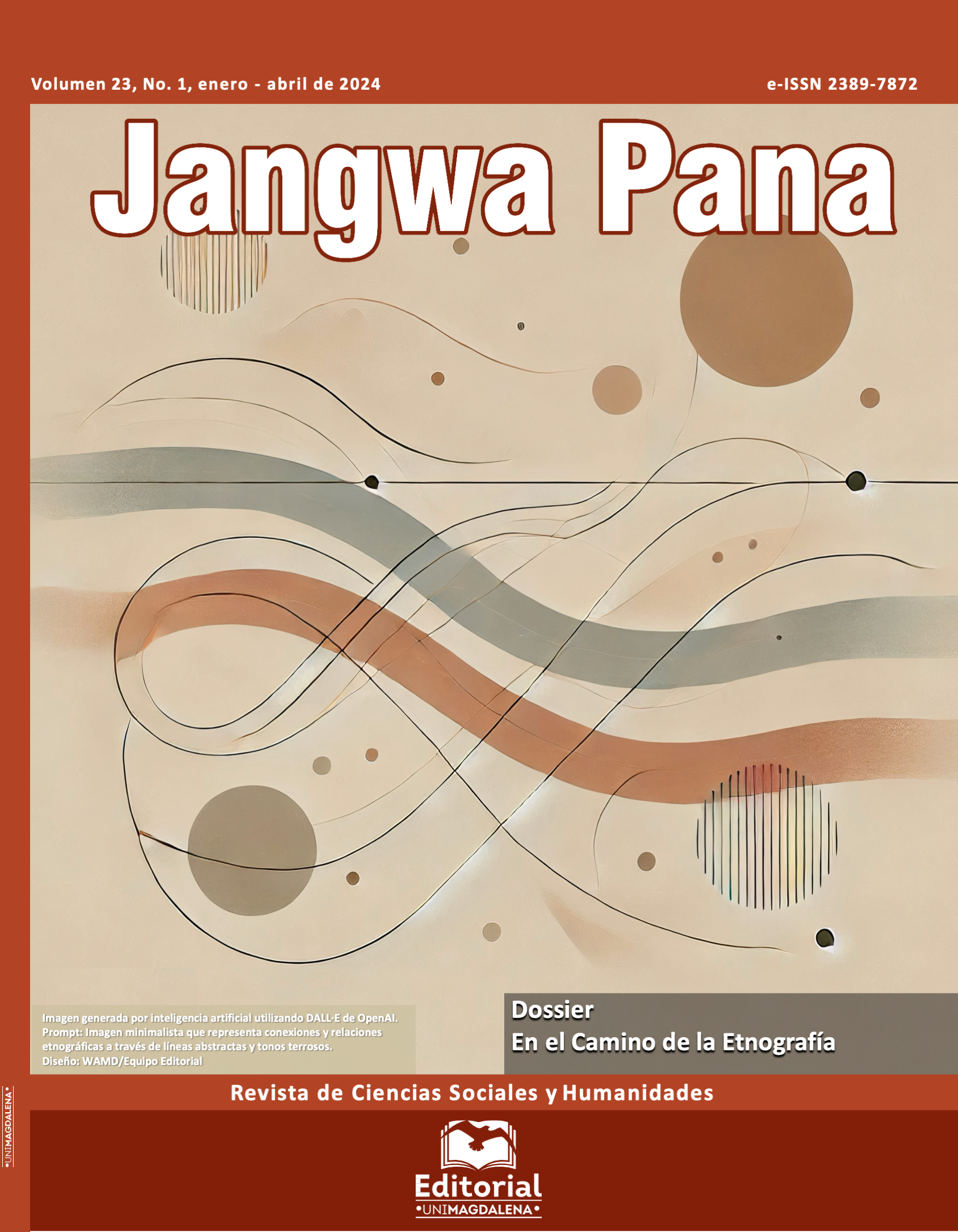From The Pacific To The Amazon: The Migration Of The Afro-Colombian Communities To The Amazon Piedemonte
Main Article Content
Abstract
This document analyzes the different causes that drove afro-colombian communities to leave the Colombian Pacific to settle in the Amazon foothills. It is studied how these people arrived in the Putumayo department and why they settled in the Cofania Jardines de Sucumbíos district, showing how the economic and kinship system, as well as the relationship with the Cofán community, played a greater role in consolidate this migratory and colonizing process. The consolidation of a migratory process, which is currently crystallizing in the formation of a community council and in the legalization of a collective territory, opens the doors to seek socio-political visibility of the communities, in this last path the afro-colombian communities of Sucumbíos.
Downloads
Article Details
References
Arocha, J., & Friedeman, N. (1986). De sol a sol. Génesis, transformación y presencia de los negros en Colombia. Planeta.
Echeverri, M. (2016). Otredad racializada en la migración forzada de afrocolombianos a Antofagasta (Chile). Nómadas, (45), 91-103. http://www.scielo.org.co/scielo.php?script=sci_arttext&pid=S0121-75502016000200007
Gobernación de Nariño. (2020). Plan de Desarrollo Departamental Mi Nariño, en Defensa de lo Nuestro 2020-2023. https://sitio.narino.gov.co/wp-content/uploads/2020/11/Plan_de_Desarrollo_Mi_Narino_en_Defensa_de_lo_Nuestro_2020-2023.pdf
Hamelin, P. (2002). Frontière, migration et environnement en Amazonie. Revue Européenne des Migrations Internationale, 18(2), 67-82. https://journals.openedition.org/remi/1639#tocto1n4
Hoffmann, O. (2007). Comunidades negras en el pacífico colombiano. IFEA; IRD; Abya; Yale; CEMCA; CIESAS.
Losonczy, A. (1993). De lo vegetal a lo humano: un modelo cognitivo afro-colombiano del Pacífico. Revista Colombiana de Antropología, 30, 37-57. https://revistas.icanh.gov.co/index.php/rca/article/view/1708/1279
Losonczy, A. (1997). Les saints et la forêt. L’Harmattan.
Losonczy, A. (2004). Sentirse negro: Empreintes du passé et mémoire collective au Chocó. Annales: Histoire, Sciences Sociales, 53(3), 589-611.
Ramírez, S. (2018). Si la champa se hunde, yo no me ahogo. El pueblo Afrocolombiano: de la desterritorialización a los territorios Afrourbanos. REMHU: Revista Interdisciplinar da Mobilidade Humana, 26(52), 131-147. https://www.redalyc.org/journal/4070/407055545008/
Rubiano, J. (2016). La reapropiación del guaico: migración y legitimación del territorio por la comunidad pasto del resguardo Rumiyaco (Nariño-Colombia). Boletín de Antropología, 31(52), 45-66. https://revistas.udea.edu.co/index.php/boletin/article/view/326866/20784127
Zuluaga, J. (2015) Afrodescendientes, representaciones y movilidad social en Tuluá. Revista CS, (16), 207-232. https://www.icesi.edu.co/revistas/index.php/revista_cs/article/view/2040/2635

